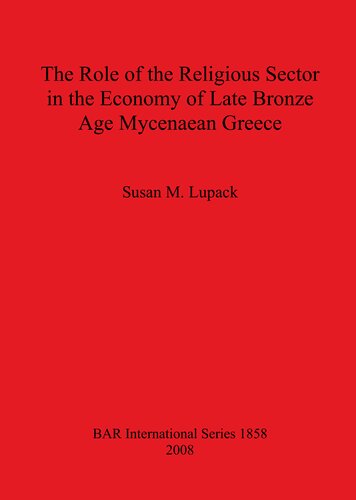

Most ebook files are in PDF format, so you can easily read them using various software such as Foxit Reader or directly on the Google Chrome browser.
Some ebook files are released by publishers in other formats such as .awz, .mobi, .epub, .fb2, etc. You may need to install specific software to read these formats on mobile/PC, such as Calibre.
Please read the tutorial at this link: https://ebookbell.com/faq
We offer FREE conversion to the popular formats you request; however, this may take some time. Therefore, right after payment, please email us, and we will try to provide the service as quickly as possible.
For some exceptional file formats or broken links (if any), please refrain from opening any disputes. Instead, email us first, and we will try to assist within a maximum of 6 hours.
EbookBell Team

5.0
88 reviewsOur conception of the Mycenaean economy has been considerably altered in recent times. The palatial administration has gone from being conceived of as a centralized, almost totalitarian bureaucracy that collected and subsequently redistributed goods to the society at large, to one that is conceived of as predominantly interested in mobilizing resources almost solely for the purpose of producing its own elite goods. Alternative foci of economic power have been recognized, the damos and the religious sector. In this work the author thoroughly explores the clues to the latter's economic activities as they appear in the Linear B tablets and the archaeological record in order to better understand the economic role of the religious sector in Mycenaean society. In addition, the author bears in mind that economic power can bring social and political power. Indeed, they are very often intertwined; therefore she also examines, where possible, the indications that the religious sector wielded some influence within their communities and with respect to the palatial authority. The early chapters, before delving into the archaeological and Linear B evidence concerning the economic activities of the religious sector, explore exactly what the author means when referring to a site as a workshop or a sanctuary, and the methods used in identifying such places. Chapter 3 is a discussion of the workshop-shrine connection as it is manifested in archaeological contexts outside of Mycenaean Greece. Chapter 4 turns to one of the bodies of evidence that has proved most useful for this study: the Pylos land tenure tablets which deal with the landholdings of Pa-ki-ja-ne. Chapter 5 focuses on the religious sector's involvement in other economic activities, including shepherding, textile production, bronze working, perfume production, and chariot and armor production. Chapter 6 investigates the Mycenaean archaeological material that appears to support the evidence found in the tablets for the involvement of the religious sector in industrial production.